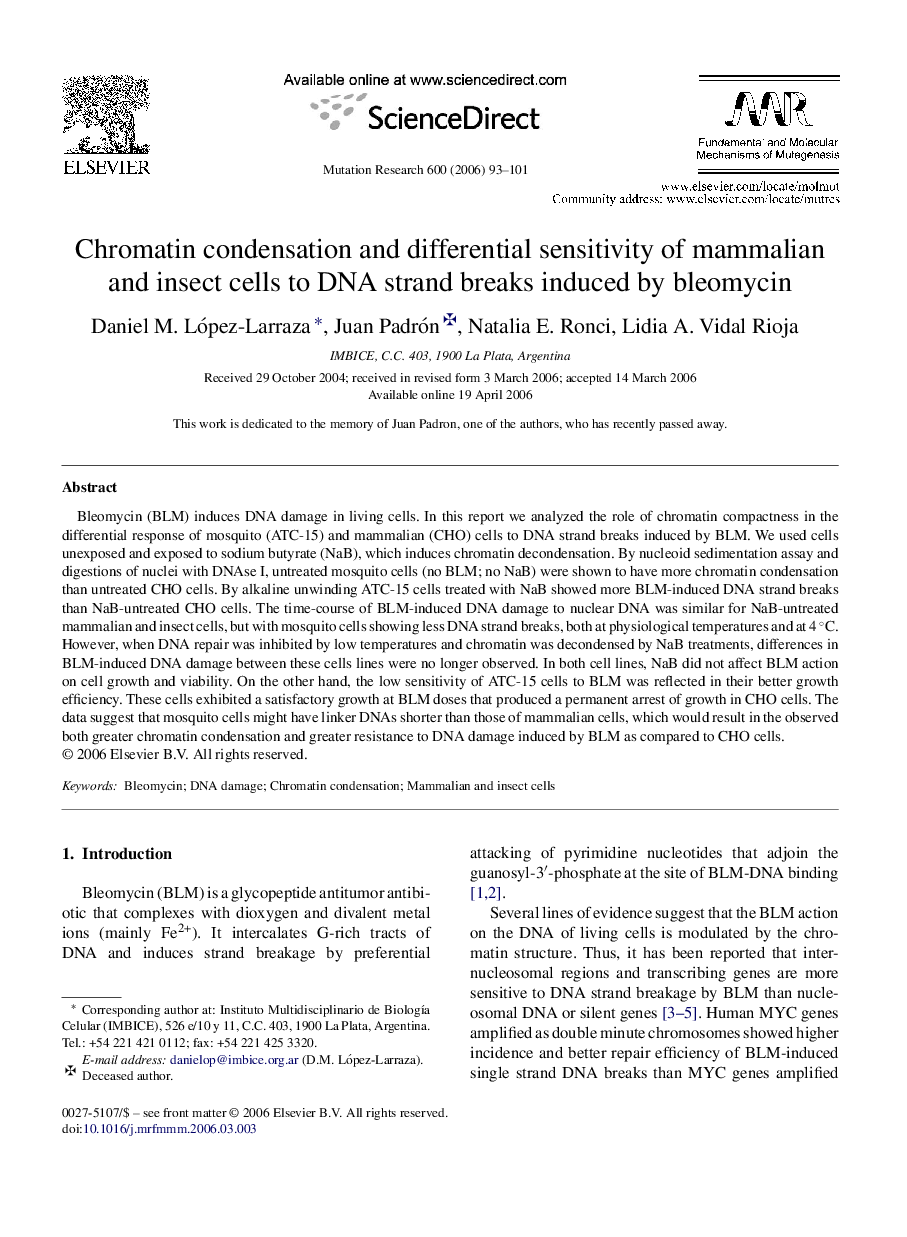| Article ID | Journal | Published Year | Pages | File Type |
|---|---|---|---|---|
| 2147538 | Mutation Research/Fundamental and Molecular Mechanisms of Mutagenesis | 2006 | 9 Pages |
Bleomycin (BLM) induces DNA damage in living cells. In this report we analyzed the role of chromatin compactness in the differential response of mosquito (ATC-15) and mammalian (CHO) cells to DNA strand breaks induced by BLM. We used cells unexposed and exposed to sodium butyrate (NaB), which induces chromatin decondensation. By nucleoid sedimentation assay and digestions of nuclei with DNAse I, untreated mosquito cells (no BLM; no NaB) were shown to have more chromatin condensation than untreated CHO cells. By alkaline unwinding ATC-15 cells treated with NaB showed more BLM-induced DNA strand breaks than NaB-untreated CHO cells. The time-course of BLM-induced DNA damage to nuclear DNA was similar for NaB-untreated mammalian and insect cells, but with mosquito cells showing less DNA strand breaks, both at physiological temperatures and at 4 °C. However, when DNA repair was inhibited by low temperatures and chromatin was decondensed by NaB treatments, differences in BLM-induced DNA damage between these cells lines were no longer observed. In both cell lines, NaB did not affect BLM action on cell growth and viability. On the other hand, the low sensitivity of ATC-15 cells to BLM was reflected in their better growth efficiency. These cells exhibited a satisfactory growth at BLM doses that produced a permanent arrest of growth in CHO cells. The data suggest that mosquito cells might have linker DNAs shorter than those of mammalian cells, which would result in the observed both greater chromatin condensation and greater resistance to DNA damage induced by BLM as compared to CHO cells.
